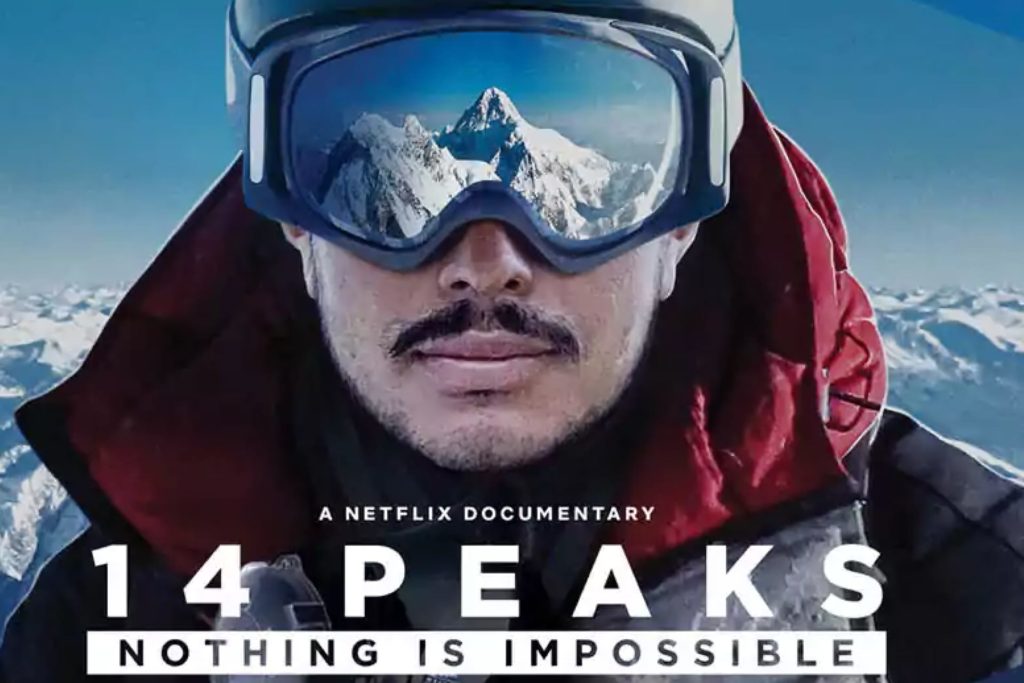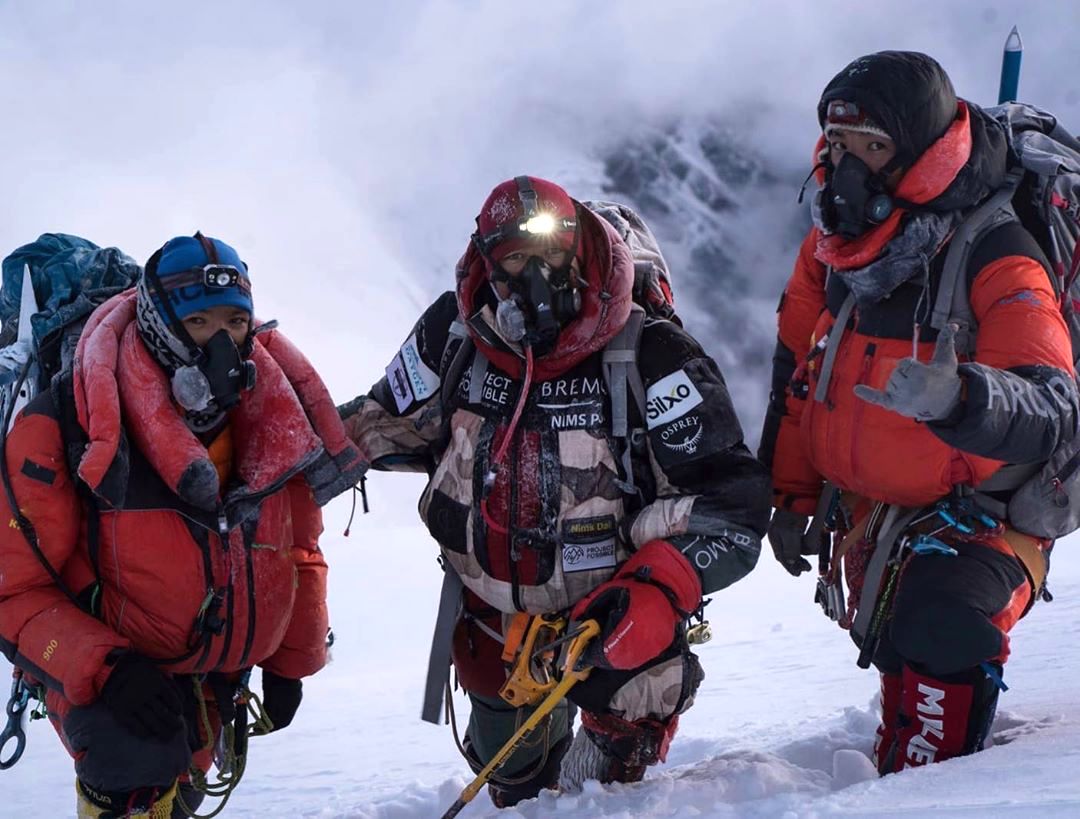The idea of climbing all 14 peaks over 8,000 metres in less than a year seemed totally unrealistic: that’s why Nirmal Purja, aka Nims, called his challenge ‘Project Possible’. On 23 April 2019 Nims climbed Annapurna, and six months and six days later he stood on top of Shishapangma, completing his 14×8000 challenge. With spectacular footage of these himalayan climbs, 14 Peaks: Nothing is Impossible is a film not to be missed. Endorsed by Messner on screen, Nims changed the game. With the exception of Tommy Caldwell’s Dawn Wall, Nirmal Purja became the first living mountaineer to embody his own story on Netflix. A must-see.
« Nepalese have always been the pioneers of the 14 peaks above 8,000 metres, but have never had the recognition they deserve. I want to represent the Nepalese. With these words at the beginning of the film, Nirmal Purja Nims makes it clear why he has embarked on this adventure. It is not just a story of personal glory, neither of a sports challenge.
At the end of the six-month expedition, after the last summit – the Shishapangma in Tibet – he returned to Kathmandu. Nims told the local media: “If this had been done by a westerner, it would have been talked about even more. Patriotic, bravura, Nirmal Purja was born far from the mountains, the son of Gurkha himself, who became an elite soldier of His Majesty. What this Netflix documentary directed by Torquil Jones aptly tells is not just the story of these 14 climbs, but the story of Nirmal Purja, who started the high mountain in 2012… before writing it in 2019.
A UKSF member
As the first gurkha to join the British Army’s Special Boat Service, Nims still takes pride in his years of service, as Nepalese can join this British regiment, the Gurkhas, because of the Indian subcontinent’s colonial past.
But this heritage, which he praises and recounts in the film, he threw away when the time came for his challenge: overriding his family’s advice, he resigned from the army, even though he has no other source of income to take on this “impossible” challenge. For a Nepalese, who started the mountain in 2012, six years before, it is quite a gamble. A gamble that he will nevertheless win hands down, by the sweat of his brow.
14 peaks: nothing is impossible delivers an unfiltered version of today’s Himalayas
On his first 8000m, Annapurna, as well as on his third, Kanchenjunga, Nirmal Purja did not hesitate to launch himself into perilous rescue operations: the images of Annapurna speak for themselves, with him and his team winched one by one to the end of a long-line (about twenty metres under the chopper for a lift from base camp to 7500 metres). The documentary does not say that the miraculous man will not survive: but what counts is that the Nepalese did not let him down.
So 14 peaks: nothing is impossible delivers a dark side of today’s Himalayanism, commercial and individual, when Nims, in Kanch, asks for help and finds that no one answers. The documentary paints a current picture of this himalayism with its own character: the abominable queues at Everest (which Nims photographed) as well as the incessant recourse to the helicopter which erases the approach steps. But Nims is in a hurry. Nims is a one-man tornado. And he is not alone, fortunately.
The risk of any “living” portrait is hagiography and this document skilfully avoids this pitfall – except perhaps on the production side – signed by Elizabeth Chai Vasarhelyi and her husband, Jimmy Chin, among others, whose added value on the screen does not stand out. Beyond this detail, Nims clearly explains the collective dimension of his project. If he is now reaping the rewards, he is the one who mortgaged his house to build a solid team to work on this “patriotic” project.
We follow him on his record-breaking climbs, such as the incredible Everest-Lhoste-Makalu chain in 48 hours. He and his team carry heavy bags, make the trail, and fit the fixed ropes. And without oxygen up to 7500 meters, they had to climb enormous differences in altitude. After having scratched six summits in Nepal and two in Pakistan, Nirmal Purja lands at K2, gives Mike Horn a pat on the shoulder, organises a party to remotivate the whole base camp before crossing the Bottleneck, that frightening serac, at night, opening the way to the summit of K2.
“Some climbers criticise Nims but I don’t see why”. Messner
“Life is absurd, but you can fill it with ideas, enthusiasm and joy,” says Messner in the film. The first person to complete the 14 without oxygen took 16 years to do so, the film taking time to explain the nuance.
King Messner praises Nirmal Purja: “Some climbers criticise Nims but I don’t see why. He did it this way [with oxygen] because it would have been impossible without oxygen in such a short time. Nims did it his way, but beyond the Hollywood music and the controversy, Nims wrote a piece of history. This biopic is a must-see.
On Netflix from November 29th.




